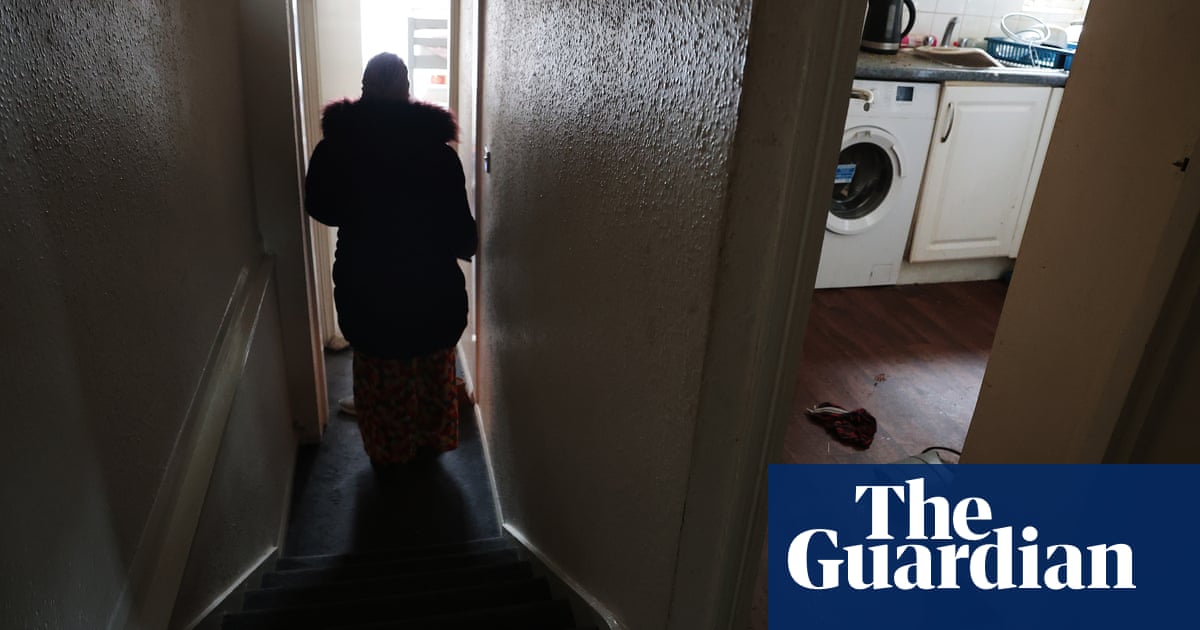‘Rat bites and chronic asthma’: schools on frontline of UK housing crisis | Poverty


Some children living in dire housing conditions have been woken up by chesty coughs caused by damp, others by the smell of sewage leaking down their walls. Toby* was woken by rats on his chest.
“It was midnight and he came to me crying,” said his mother, who does not want to be named. He is one of more than 3,800 children living in temporary accommodation in Lewisham, the council with the 10th highest number of children living in such housing in the UK.
Nationally, 142,000 homeless children are living in places like commercial hotels, converted offices and dingy hostels, an all-time high, after rents and no-fault evictions have soared across the country.
Schools have seen the impact of this first-hand. Last week, a National Education Union survey found that 59% of teachers in England and Wales had seen their students experience frequent ill health due to poverty, with housing a major factor. In Lewisham, south London, 11 headteachers have signed a letter, organised by local community group Lewisham Citizens, to the council declaring that a local housing emergency is jeopardising the health of their students.
Beecroft Garden primary school is a microcosm of Lewisham as a whole. About one in five children at the school live in temporary accommodation, the same proportion as across the borough.
The school is situated in Crofton Park, a gentrified pocket of the borough where a small bridge divides multimillion-pound homes and council estates. Some students come from rooted, affluent homes while others are being shifted around by the council or forced to live in squalor by negligent landlords. Where a child calls home has become increasingly clear by the condition they turn up to school in, if they turn up at all.
“Some children are unable to bathe or wash their clothes. It affects our students’ self-esteem. A lot of them are worried that their friends will know how they’re living. It’s drastic on their physical and mental health,” said Naomi Lothian, the school’s family support officer.
She grew up in an estate near the school, across the bridge that divides the area into up-and-coming and left behind. She is on the frontline of a housing crisis affecting the school’s poorest students. Those living in homes with damp and mould are coming into local schools with coughs and chest infections, others are being bitten by mice and rats in pest-filled homes.
When the Guardian visited the school last month, Lothian was zooming around dealing with the needs of numerous students under her watch, including one long-running case.
Two boys at the school had been living in mould-filled, rat-infested temporary accommodation for over a year with their mother. They had had no electricity or hot water for months after rats had bitten through wires and damaged the boiler. Their mother was bitten twice by rats and her three-year-old son had had repeated chest infections due to the mould. Her older son did not attend school for two weeks after being woken up by rats on his chest.
When the Guardian visited the home, rat droppings were visible on the floor and sofa and large holes in the floor and walls where rodents roamed remained exposed. The family were sent to live there by Southwark council.
The letting agency that manages the property on behalf of the private landlord ignored the complaints about rats and mould. After months of emails and phone calls, Lothian was told that the family were being rehoused nearby. Moments after signing the new tenancy agreement, the family’s current landlord rang up to say they needed to leave the property within 24 hours.
Temporary accommodation for many families is no longer temporary. Data obtained by the Guardian through freedom of information requests shows that in Lewisham, 297 households had been in temporary accommodation for more than five years by the end of 2023. In nearby Lambeth, 1,006 households spent more than five years in such housing, and 311 for over 10 years.
At Rushey Green primary school in Catford, the majority of students live in social housing. Some have been without heating for months, others live in rooms blighted by damp and leaking sewage. One seven-year-old girl lives in a single room with her mother. She has an oven as a bedside table. They were put into temporary accommodation four years ago by Lewisham council. “They put us in that building and abandoned us there,” said her mother, who does not want to be named.
Her daughter often wakes up in the night due to the smell of sewage and has injured herself playing in the cramped room. “She was doing a handstand and she banged her mouth, it was full of blood,” said her mother.
“In the middle of the night, I just lock myself in the bathroom and cry because I don’t want my daughter to see me. I want her to see me as a strong mum.”
Lisa Williams, the school’s headteacher, said some of her students have developed chronic asthma due to damp and mould and others have been bitten by mice or bedbugs. “It’s horrendous,” she said.
The Guardian spoke to a number of parents at the school who shared similar stories. One mum, who has two children attending the school, lives in a flat with one working window that was so mould-infested a mushroom grew out of the doorway.
Teachers say the council has been sending families out of the borough, as far away as Kent. These students often arrive exhausted and end up missing school.
Cheryl Powell, 47, was sent to live in temporary accommodation in Woolwich two years ago. She has to take three buses to bring her son Jaheen to school. “He has no life. I get him up for 6am and we leave at 7am. School doesn’t start until 8:45am,” she said. He eats his dinner, usually a takeaway, on the bus home before sleeping shortly after getting in.
Staff at the school are also not immune. Rosaline Fofornah is a supervisor at the school. She lives in a mould-infested council home. “It’s going to make me and my children sick,” she said.
For many children, staying put in such conditions is their only option. “I’ve got so many families that are literally living on top of each other. They either try to get private accommodation, which they can’t afford, or they stay where they are. There is literally nowhere to go,” said Lothian.
Southwark council said they were made aware of the issues at the home in Crofton Park in February and agreed that the family should be moved after visiting the property. They were moved “as soon as alternative housing was found in early March”.
A Lewisham council spokesperson said: “We expect our temporary housing, whether managed directly by us or leased from the private sector, to be properly maintained, and we apologise to the families we have let down in these cases.
“Lewisham council is buying back and building new social homes in the borough as well as making substantial and ongoing investment in maintaining and improving our existing housing stock. Our budget for 2024/25 allocates around £80m to spend on improvements.”
Source link




